Our chickens have mites. Specifically, Northern Fowl Mites. These little critters are pretty common all across Canada, and they can be a great big problem.
The most obvious symptom of poultry mites are poopy bums on your chickens. If you pick up a chicken and examine their vent (bum) area, you will see dirty feathers (mite eggs and other yuck), and you will also probably see some tiny dark brown or black round specks moving around – these are the mites themselves. Northern Fowl Mites hang out on the skin around the vent and under the wings, and they bite the chickens and feed on their blood.
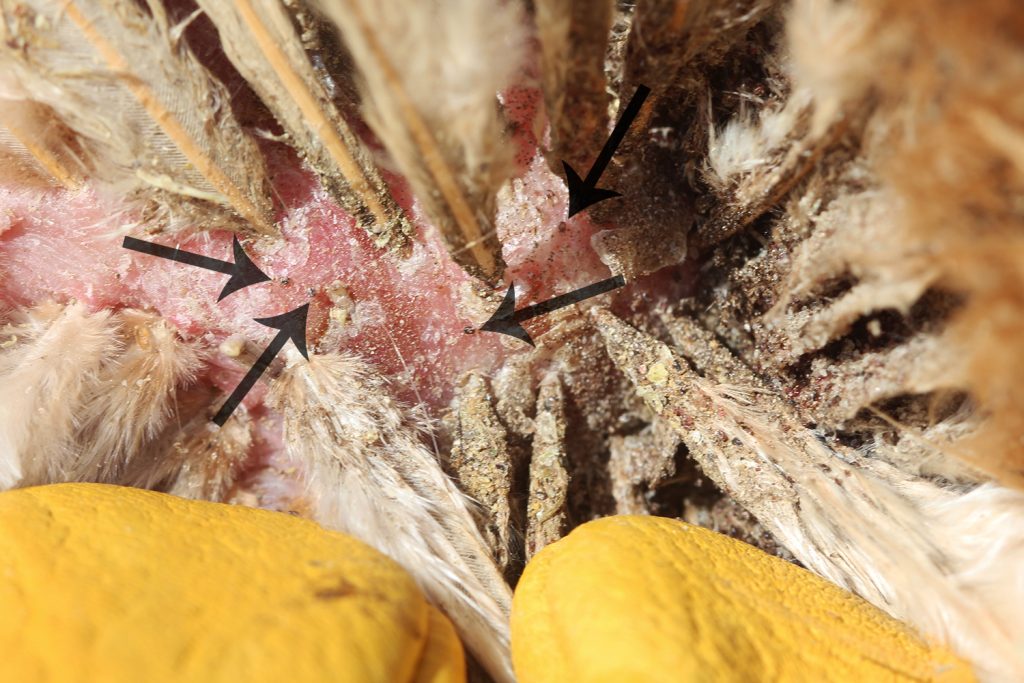
The Chicken Chick has a great article about how to identify parasites in chickens, which is helpful in figuring out whether you are dealing with mites or lice, as the treatments may differ.
Northern Fowl Mites are difficult to treat. They have a short life cycle (5-7 days), and they quickly develop resistance to various treatments. Besides living on the chickens, they also infest nesting boxes and coop bedding, adding to the difficulty in dealing with them.
Right now, though, the biggest issue with treating them is that there is no approved treatment in Canada.
It used to be that you could buy an over-the-counter dusting powder that you sprinkled on your chickens, the nesting boxes, and the bedding, with a repeat in a few days, and generally the mites were dealt with. However, that product was pulled off the shelves last year, with no tested and approved replacements.
There is all sorts of advice floating around the internet for how to treat mites without dusting powder, but I had trouble finding sources that were Canadian (and therefore recommending products that are actually available here) and also reliable.
So I asked my vet.
My vet said that any treatments would be off-label, which is a problem, because there is no information about withdrawal times. Withdrawal time is the amount of time that any medication keeps showing up in the eggs or meat, and could therefore affect anybody eating those eggs or that meat. You definitely don’t want to poison your kids when you’re trying to kill the mites!
Ugh. I needed more information.
Through a long and winding series of phone calls and emails, I eventually found myself speaking with Poultry Veterinarian Dr. Stephanie Smith. Dr. Smith has a passion for chicken issues, and was extremely helpful.
Dr. Smith recommended treating every bird in the flock, whether they had obvious mites or not, as there is a very high chance that they are all carrying at least a few mites, and we definitely don’t want them passing those mites between the treated and untreated chickens. That would increase the chances of the mites developing resistance to whatever treatment we use.
The first treatment we discussed was Diatomaceous Earth (DE). This is a powder made from a particular type of rock full of fossilized diatoms. The particles in the powder are tiny, but have very sharp edges that cut insects’ bodies when the insects crawl across it. Diatomaceous Earth is organic, so some people like to use it for bug control, but its effectiveness is questionable, and the sharp particles can cause respiratory problems if the chickens breathe it. If you were using DE, you would need to thoroughly dust each bird with the powder in a well-ventilated area (preferably outside). Some people also spread DE around their coop, but this runs the risk of causing respiratory problems as the chickens dust bathe and breathe the DE.
Sulfur can also be used to control Northern Fowl Mites, but it can cause allergic reactions in people, and is generally not a good choice for a backyard flock.
There is a product called Ectiban that is an insecticide approved for use in cattle in Canada; Dr. Smith suggested it as a good way to control the mites in the nesting boxes and coop litter, though it is not approved for use on the chickens themselves in Canada. I did find a website that gives dosage information for actual use on chickens, with accompanying withdrawal times before butchering. Unfortunately, there is no information about withdrawal times in laying hens, and it is not clear if this is an approved use in Canada.
Another option for spraying directly on chickens is called Debantic. Dr. Smith noted that the nice thing about this insecticide is that there is no withdrawal period for eggs. Debantic is a powder that gets mixed with water to make a spray that you spray on the chickens. The downside of this product is that it has to actually contact the mites in order to kill them, and it might need several applications to be effective. Here is some further information about Debantic.
Lastly, we discussed Ivermectin. Ivermectin is a product used in horses, cattle and swine; it has not been tested or approved for use in chickens. It is available in a paste that is used for worming horses, as well as an injectable liquid for cattle and swine. The paste is not a good idea for use on chickens, as it is very hard to control the dosage; using the liquid (injectable or pour on) 1% Ivermectin product gives you a lot more control.
Dr. Smith noted that you can put a drop or two of the injectable Ivermectin on the chicken’s skin (not injected) at the bottom of its neck, and it will be absorbed into the chicken and kill the mites when they suck the chicken’s blood. She suggested that people consult their vets for dosing, as chicken weights vary from scrawny little layers to the big dual-purpose and meat breeds, so it’s a good idea to run it by a professional before medicating your flock.
Some people put Ivermectin in their chickens’ water, but this is not recommended for backyard flocks, as it is very difficult to calculate and control the dosage. Dr. Smith also mentioned that if you use Ivermectin too frequently (less than 7 days between doses), there can be problems with toxicity – it can make your chickens sick. There is no established withdrawal period for meat or eggs, but most vets recommend not slaughtering the chickens or eating the eggs for 3-4 weeks.
It is frustrating that there is not a simple solution to poultry mites in Canada. There is a fine line between killing all the mites and preventing resistance on one hand, and having lengthy (or just plain unknown) withdrawal times to make sure you don’t poison your family. I also would be very careful about disposing of the treated coop bedding, as you don’t want to be adding insecticides to your garden, especially since it is hard to find information about how long they persist in the soil.
Pin it for later:
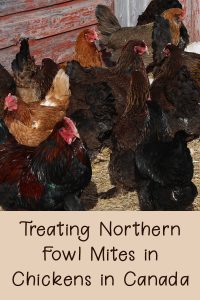
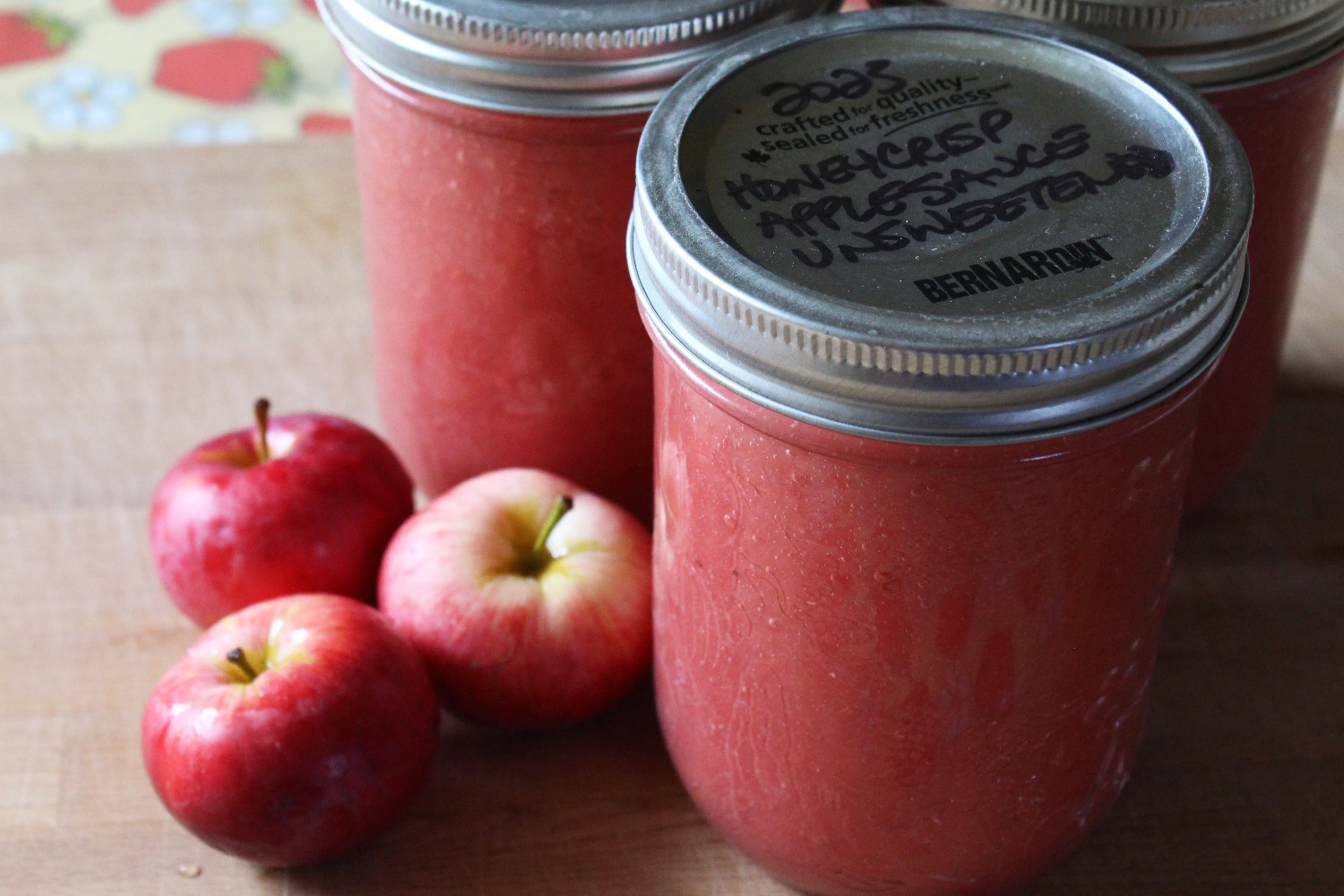

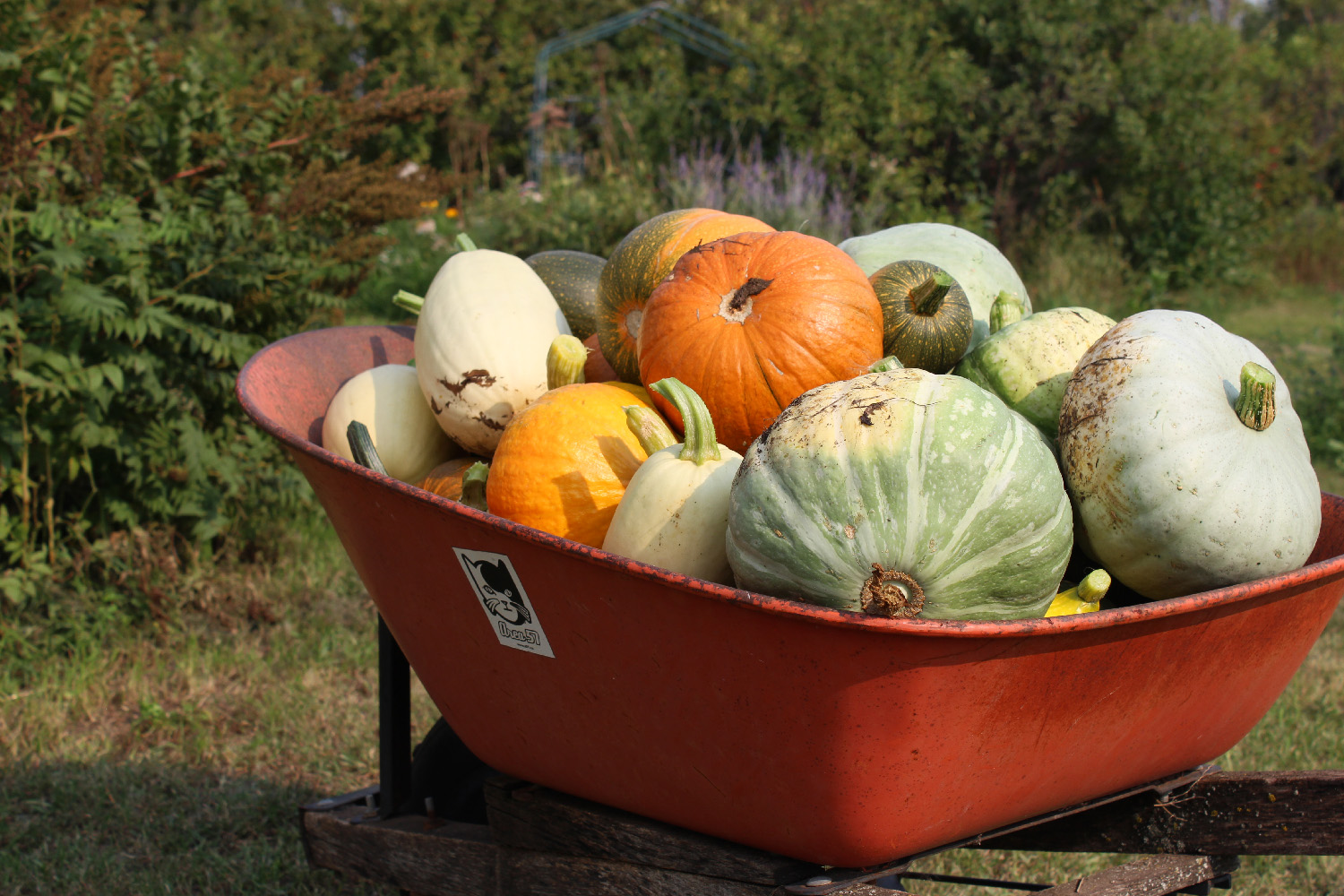
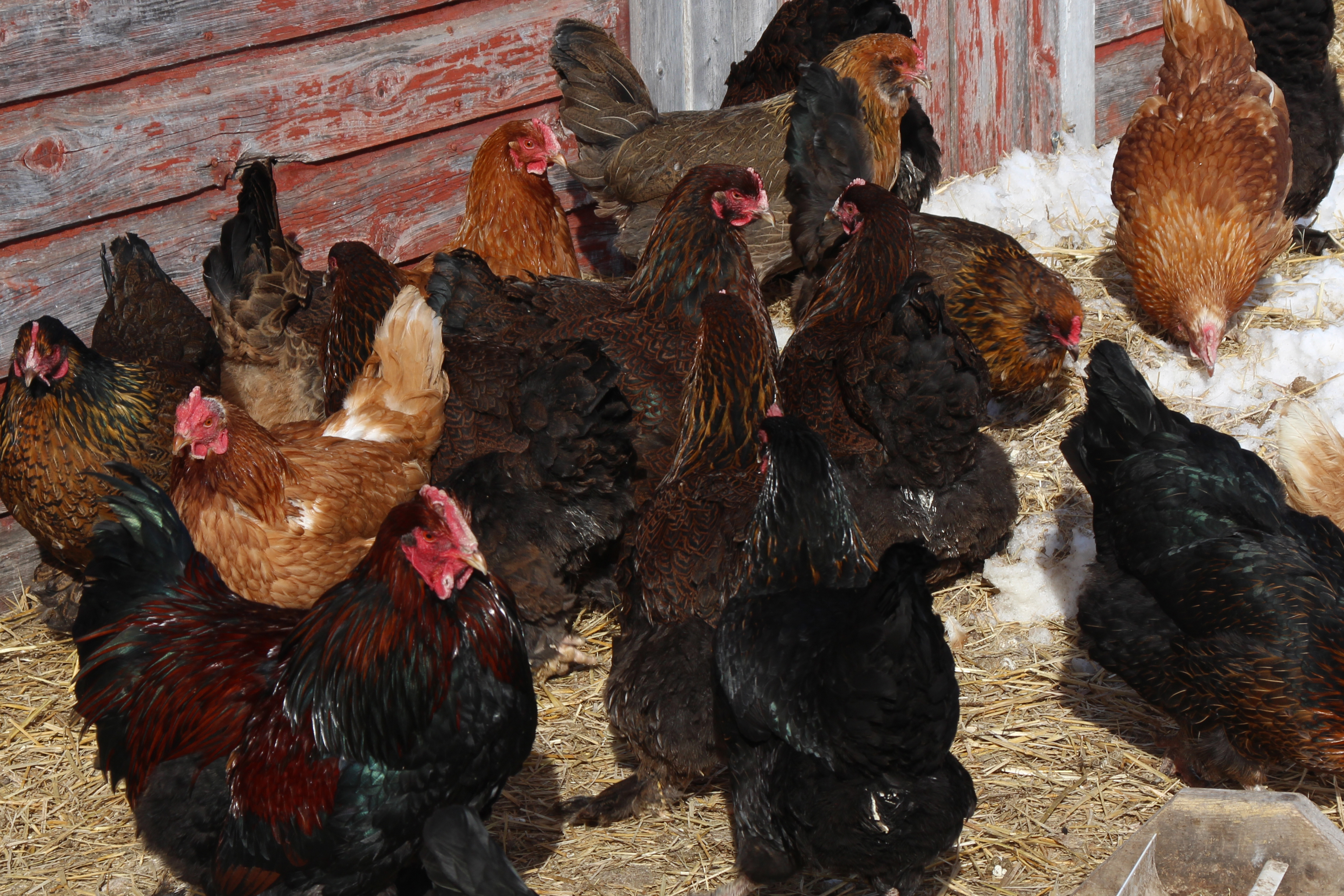
32 Comments
valeire
Very interesting, I know that back in the day, way back in the day, I have seen oil be sprayed on around their vents/bum to smoother the mites and under the wings. It would have knocked them down for a good while but would certainly not work as well as the dusting powder.
I have found that I have reduced issue when I sprinkle the DE on their peat moss dusting box/bag.. I have often wondered if what is in the peat moss that seems to effect the mites.. do they get dried out more.. is there something in the peat itself that effects them? No idea.. but I do know that I have had much less issue with it for my own flock.
So what did you decided in regards to what you are going to do.. ?
Jess
I wonder if it’s the acidity in the peat moss that has the effect on mites? Dr Smith did mention sulphur, though she said that allergic reactions are common enough that it was a poor idea. My vet also suggested bathing the chickens to drown the mites, but I can’t imagine trying to bathe 50 chickens when the nighttime temps are still close to -10. We ended up going with Ivomec, in large part because we had some from when we still had goats.
Marian Lagemaat
Please tell me how you used the Ivomec on your chickens for mites!! If you would like, can you email me? Thanks!
Jess
Hello! What we did was put 2-3 drops (depending on the size of the bird) of injectable Ivomec on the skin of each chicken (NOT injected), at the base of the neck. We repeated the treatment a week later. We did not use the eggs from the coop for three weeks. This is not an approved use, and there isn’t much (any?) research on the withdrawal time, but it did seem to work quite well.
Cindy
HEllo,I am wondering, you withheld eggs from the last application of IVERMECTIN, for three WEEKS AFTER the last appliCation
Jess
Yes, three weeks after the final dose.
Heather
I just found your blog and absolutely love it. I’d love to post it to my facebook group. I think everyone would find it really helpful! Thanks 🙂
Jess
Thank you for the kind words! You are welcome to post the link anywhere it would be useful.
Jennifer Kraiker
Did you treat the coop as well or just the Ivomec on the chickens?
Jess
Just the chickens – the mites can’t survive for long without the hosts, and the Ivomec persists in the chicken’s systems for several weeks.
Emily
Are red mites and northern fowl mites the same? What about sending away for powders containing permethrin? I see several products online.
Jess
I do not believe they are the same. You could certainly send away for products, but make sure they will really work the way you want them to.
Mindy
thank you so, so much for sharing your your experience and so thoroughly!!!!
I have been researching ivomec INJectable for days (I’m also in canada and that’s what I found locally) I have not been convinced based on anything else that I’ve read so far that I WASN’T going to hurt them! (And as I’m sure you know, THere is a tone of information out there!)
Thank you for your great explanation. I feel more than reassured and I’m going to tackle it tonight!!…my chickens send many thanks too 🙂
Jess
You’re welcome! I was probably a little less scared of the Ivomec, because we had used it off-label for goats in the past, and hadn’t seen any reactions or problems. Good luck with your chickens!
Heather Anne Starrs
Can the ivomec be used on new chicks? (sorry for the capitals, for some reason it won’t go small letters)
Jess
I wouldn’t. I was using one drop on my small hens; chicks are so much smaller than that, I’d be worried about poisoning them.
Jess
Where did you buy this in Canada I’m in Bc and can’t seem to find it anywhere!
Jess
You used to be able to buy injectable ivermectin over the counter at any agriculture-type store, but it might have gotten caught up in the sweep with making a lot of veterinary medications prescription only in Canada. Last time I bought a bottle, it was directly from my vet.
Karen
Hello – thanks for the information, i have been battling what I think is lice and mites in my 35 chickens for about a year now. I’ve tried DE and Sulphur, multiple sprays of dr doom, and garlic and apple cider vinegar in their water. nothing has really worked yet. I have injectible ivermectin from my vet, but have been too scared to use it. I’ll try using it as drops on their neck and see how it goes. thanks!
Samantha
Hi, im in the same boat….tried EVERYTHING eXcept ivermectin …….NERVOUS to use it, thoughts or results much APPRECIATED, Sam
Jess
We have been using this method (of a couple of drops of injectible ivermectin placed on the surface of the chickens’ skin) for several years, now, and haven’t had any issues with it. It definitely gets rid of mites, but you do have to do that second treatment.
Beatrix Syjuco
Hello. Can anyone please Tell me how often ivermectin spot on drops (application behind the Neck) can be repeated? My problem is that my bird lives indoors but spends every morning outdoors with a flock of wild birds. As I cannot treat the wild birds, would like to treat my bird as frequently as is considered safe in order to maintain constant mite-Killing effects in his system. How long does one treatment of Ivermectin continue to kill blood suckling mites for, once administered? How soon do the effects wear off, and how often is okay to treat my bird, given that he is constantly exposed to new mites from outdoor birds?
Jess
I don’t think you can use ivermectin this way, as the mites develop tolerance to it fairly quickly.
Andrea
Do you have any comparison between the injectable ivermectin and the pour-on kind?
Jess
No, unfortunately, I don’t. You could look at the percentage of active ingredient on the bottles, though, to get a sense of how much you might need to use.
Michelle Vlahovic
Do you know of or had any experience with doktor doom for poultry mites
Jess
I haven’t tried it personally, but perhaps someone who follows this blog will chime in. If all else fails, your local vet might be able to tell you the pros and cons.
Conni pfeiffer
New chicken mom, battling mites. Was given doktor doom. Worked well but I neglected second treatment because I knew I didn’t have enough on hand. Now they are back. I suggest getting a couple of bottles to Avoid this issue. I also have scaly leg mites so I am going to ivermectin the ckns and dr doom coop and nesting boxes. Also heard a tip about hanging a dusting sack of sulphur in your coop doorway so that the chicken bumps it and gets a little bit of a dusting when they go in or out. Going to try that as well.
Michele
Hi, Just wondering wher youcan buy ivermectin?
Jess
You used to be able to get it over the counter in Canada, but now I think you can only get it from a vet. I don’t know if you need a prescription or not, though – you might be able to just go in to your vet’s office and ask for it; I’m not sure.
Carole
New chicken mom, have three chickens. Have you had an experience with using exzolt in canada?
C
Hello,
Quick comment regarding the egg withdrawal period after the use of ivermEctin… prior to my use of ivermectin, i spoke to several vets for guidance on the length of time advised for egg withdrawal, since the research isnt there vets were cautious about making any recommendations. From there, i decided to talk to a doctor who reassured me that ivermectin Has been approved for human consumption for 35+ years and used on children in much larger dosages than chickens will receive with no adverse side effects. The dr had no concerns with egg withdrawal period.
I use a pyretherin powder in the coop (walls and bedding) pyretherin is the natural form of permetherin (synthetic). I also sprinkle woodash in with my bedding. Caution – woodash when wet can be caustic when wet so not recommended outdoors